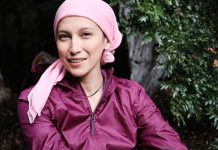
In a recent study, researchers from the University of Notre Dame find that stiffer breast tissue creates an environment more prone to cancer
Stiffer tissue enables the disease to interfere with the surrounding healthy cells.
Fat cells, collagen fibers and epithelial cells make up the microenvironment of breast tissue. Cancer typically appears around the epithelial cells.
Previous studies looking at differences between healthy and cancerous tissue found that the cancerous tissue differed in stiffness.
In the study, the team examined tumor growth and metastasis at fabricated a human tissue model.
Their aim was to examine how cancer interacts with surrounding cells and how it manipulates those cells to its own benefit.
The model allowed the team to control the stiffness of the tissue, mimicking both healthy and cancerous breast tissue structures.
The researchers found manipulation of fat cells to be stiffness-dependent.
In tests where the tissue was stiffer, the cancer halted the differentiation process of the surrounding fat stem cells, favoring a more stem cell-like state creating a microenvironment that favors a tumor to grow.
The team suggests that stiff tissue can present a microenvironment susceptible to tumor growth by enabling the cancer cells to modulate its surrounding connective tissue cells.
The results of this study could help make the case for tissue engineered human disease models to be used as part of a parallel approach to drug screening before administering those drugs in clinical trials.
Pinar Zorlutuna, assistant professor at the University of Notre Dame, is one study researcher.
The study is published in Biomaterials.
Copyright © 2018 Knowridge Science Report. All rights reserved.
Follow Knowridge Science Report on Facebook and Twitter.
Figure legend: This Knowridge.com image is for illustrative purposes only.
Journal reference: Biomaterials.



